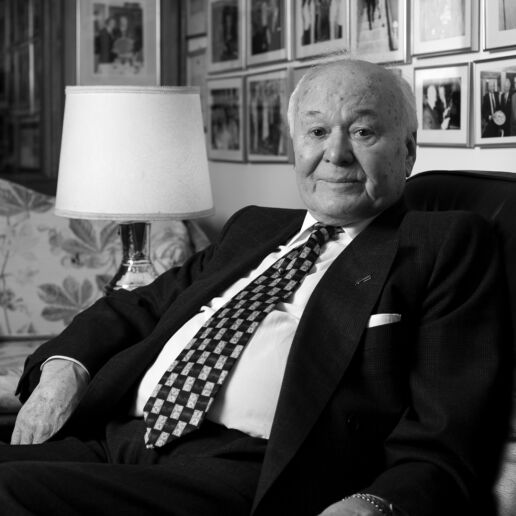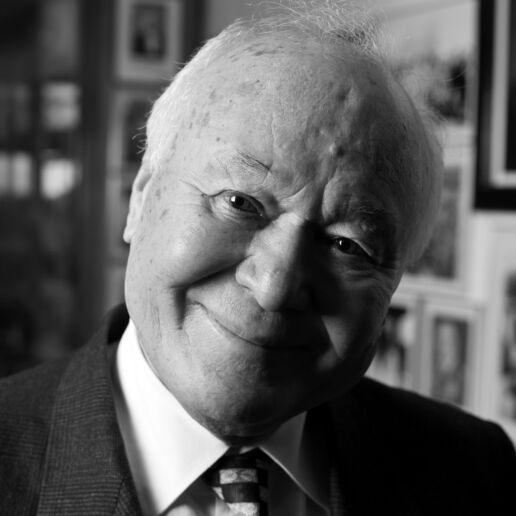BEYTİ GÜLER
A story of a name becoming a place, and a place becoming a memory.Living in a dynamic metropolis like Istanbul, we witness how everything and everywhere seems to change rapidly. Yet, what gives this city its magic is precisely what doesn’t change. In addition to its centuries-old heritage, Istanbul has modern-day classics that have remained intact over recent decades. One of them is Beyti. The restaurant founded by Beyti Güler; whose name also graces a beloved kebab dish; a living legend. And what keeps it legendary is simple: the place, the food, the service. None of it ever changes. Here, we listen to the story of this 80-year-old institution in the words of its founder.
PAPER How old were you when you first moved to Istanbul? How did the city make you feel back then, what were your dreams?
Beyti Güler I moved to Istanbul with my family when I was four, from Tōtrakan, Bulgaria. We are Crimean Turks by origin. This migration took place with the encouragement of the late Tevfik Rüştü Aras and a decree signed by our Great Leader Atatürk.
How did your relationship with meat begin? Was it simply a means of making a living, or was there a deeper connection?
BG In those years, Küçükçekmece was an area filled with slaughterhouses and butcher shops. That’s where I learned about meat. We set out simply to make a living but each day, we realised we had to push ourselves a little further. Over time, my connection with meat deepened. It became a craft.
When you chose this profession, did you have a dream in mind or did everything unfold naturally?
BG When I graduated from the Sultanahmet Technical School, my dream was to open a bolt-and-nut factory. At one point, I even bought land in hopes of one day making it happen. But life always pulled me back to the restaurant, to this work. I never really strayed from that path.
A STORY SHAPED BY EFFORT
Looking back after all these years,what is the moment that makes you say, “I’m glad it happened this way”?
BG I gave my life to this work. I grew tired, and yes, I paid a price. Of course, I’ve had shortcomings. But today, when I look back, I say, “I’m glad I worked this hard. I’m glad I gave it my heart.”
Serving people is difficult but it’s also deeply rewarding. I’ve met valuable people, built great friendships. I’ve received praise that money can’t buy, I’ve earned awards. I’ve been written about around the world, my name mentioned with admiration.
Who would have imagined that a journey starting with four tables and sixteen chairs in Küçükçekmece would lead me here? It all happened through perseverance and work.
“Many individuals have served as examples for me with the way they carried themselves. Among them, I’d place Atatürk first. As a child, I had the chance to see him up close. In Florya, while swimming or rowing, he never stopped us children from approaching him. I was one of the lucky few.”

Who has influenced you most in life?
BG It’s hard to name just one person, but I’ve always respected people who are good at what they do. Many individuals have served as examples for me with the way they carried themselves. Among them, I’d place Atatürk first. As a child, I had the chance to see him up close. In Florya, while swimming or rowing, he never stopped us children from approaching him. I was one of the lucky few.
MORE THAN A RESTAURANT
What, in your view, is the essence of “Beyti”? What makes it truly special?
BG Beyti Restaurant came to where it is today through eighty years of effort and perseverance. I’ve always asked myself how I could take my work a little further. The spirit we had was the same as that of the early years of the Turkish Republic. The key was to never lower the bar.
You gave your name to a dish. Today, that name appears on nearly every kebab restaurant’s menu, often far removed from your original recipe. How does it feel to watch your name take on a life of its own? Has it ever felt like losing something that once belonged to you?
BG I never set out with grand claims. Over the years, hundreds of people who trained with me have continued in this profession—at home and abroad. Everyone is chasing their livelihood. I’ve never had a negative thought about anyone who set out from here. On the contrary, I feel proud. I just hope they do their work with integrity.
As for the “Beyti Kebab” that carries my name, I only hope it remains exactly as it started; on the menu of Beyti Restaurant. That’s what matters to me.
A TASTE UNTOUCHED BY TIME
The Beyti menu has remained virtually unchanged for decades. In your opinion, what makes a dish or a place, a classic?
BG There have been a few additions over time, but the essence has stayed the same. Preserving flavour and quality is what matters most to me. A customer once said, “I used to come here with my father as a child. Now I bring my grandchildren. The taste hasn’t changed.”
It’s hard to describe what that kind of comment feels like. I always look into the eyes of the guest walking out the door; to see if they were truly satisfied.
Is there a dish you could eat every single day without getting tired of it? A taste that still excites you from the very first bite?
BG If I don’t eat meat, I don’t feel full.
If you could spend just one hour anywhere in Istanbul, where would it be?
BG My whole life has revolved around my work. My biggest hope is that it continues the same way after me. So it probably won’t come as a surprise that I would choose to spend that hour in my restaurant.
ARCHITECTURE THAT SPEAKS THE LANGUAGE OF THE PLATE
Beyond the food, Beyti is also known for its striking architecture. How did your design process with Yılmaz Sanlı reflect the soul of the place? Why did it take 11 years to complete and is there a story behind it?
BG My mother and I used to sketch this project on wax paper. We drew inspiration from the entrance to my grandfather’s house in Tōtrakan, Bulgaria. From those drawings, Yılmaz Sanlı shaped the architectural vision. It took a long time to build because we never compromised on the project and built it entirely with our own means. You can’t compare the conditions of those days to today’s.
A STORY THAT LIVES BY ITS NAME
Beyti is no longer just a restaurant, it’s a name, a story, a memory. What does this legacy mean to you? And if one day you had to pass it on, how would you want it to be remembered?
BG All of this has taken Beyti beyond the boundaries of what a restaurant is. Over time, it turned into a way of thinking, an attitude. Making sure that every customer walked out satisfied has always been my priority. It’s what guided us. This story isn’t just mine. It’s also a reflection of this country and society over the past eighty years. So I don’t dream of closing a chapter, I dream of continuing it. I just hope the name Beyti will always be remembered as it began: with honesty and consistency.
ABOUT BEYTİ’S ARCHITECTURE
Construction of the Florya building began in 1972 and was completed in 1983. Including wait times, the process took 11 years. Until recently, the design aspect of Beyti was rarely talked about. But even the Michelin Guide notes: “The moment you step through the door, the atmosphere says it all, everything here is crafted with care and distinction, just like Mr. Beyti himself.” “A one-of-a-kind space in Istanbul.”
What makes the structure, designed by one of Turkey’s great architectural figures Yılmaz Sanlı, so unique is its elegant blend of modern and traditional Turkish architecture. The three-storey, 3,000-square-metre building includes 10 dining rooms, 3 terraces, and 5 kitchens. Each area of the restaurant reflects different facets of traditional Turkish design. Despite the level of care and detail, the space never overwhelms the visitor nor does it overshadow the dining experience. In that sense, the architecture and the plates at Beyti are perfectly aligned.
The restaurant offers a carefully curated selection of Turkish cuisine, served with the highest quality ingredients and presented with refined simplicity. The legendary atmosphere of the restaurant owes much to the way Yılmaz Sanlı’s bold design is presented with such quiet modesty.


